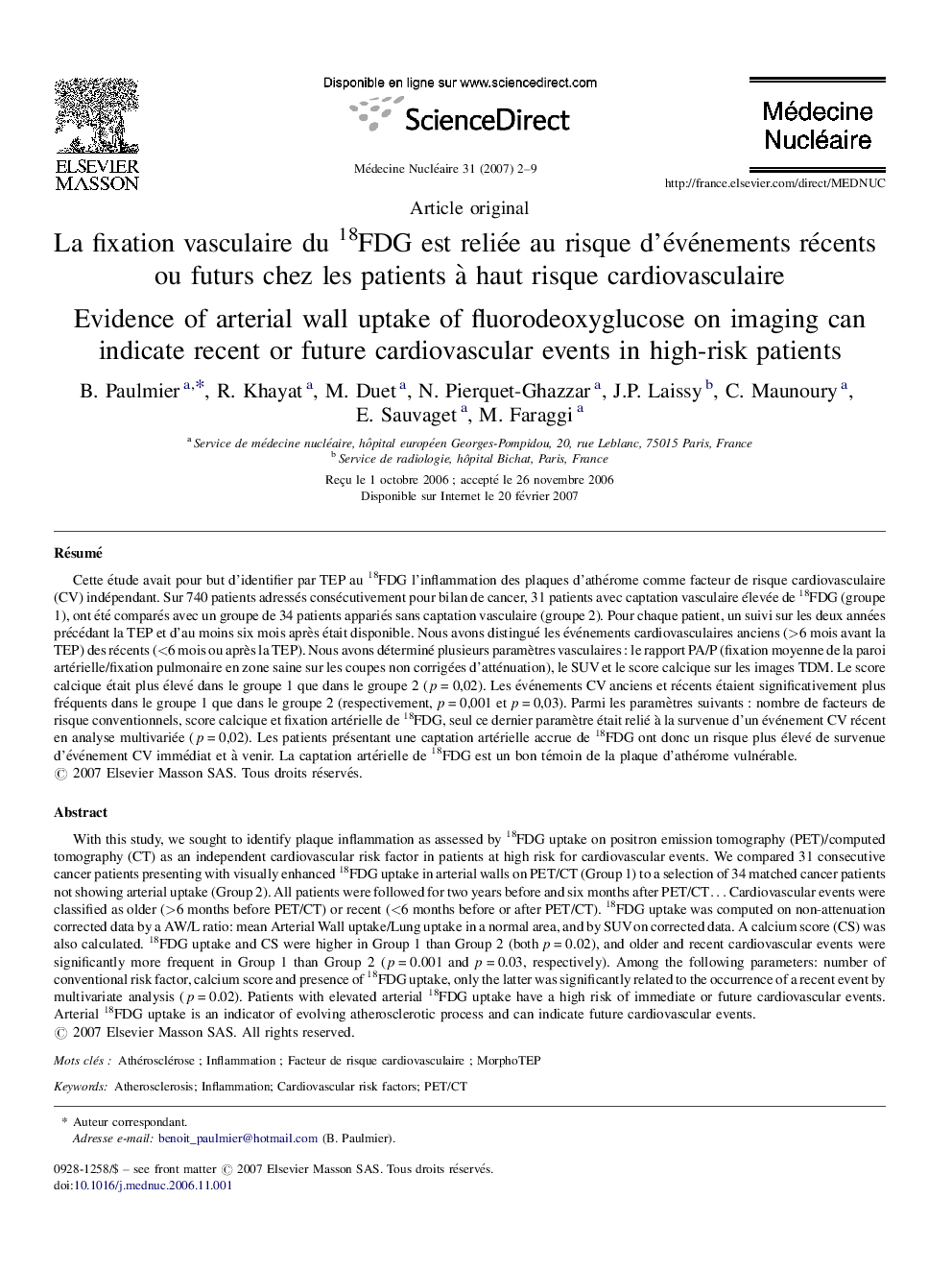| Article ID | Journal | Published Year | Pages | File Type |
|---|---|---|---|---|
| 4244912 | Médecine Nucléaire | 2007 | 8 Pages |
Abstract
With this study, we sought to identify plaque inflammation as assessed by 18FDG uptake on positron emission tomography (PET)/computed tomography (CT) as an independent cardiovascular risk factor in patients at high risk for cardiovascular events. We compared 31 consecutive cancer patients presenting with visually enhanced 18FDG uptake in arterial walls on PET/CT (Group 1) to a selection of 34 matched cancer patients not showing arterial uptake (Group 2). All patients were followed for two years before and six months after PET/CT⦠Cardiovascular events were classified as older (>6 months before PET/CT) or recent (<6 months before or after PET/CT). 18FDG uptake was computed on non-attenuation corrected data by a AW/L ratio: mean Arterial Wall uptake/Lung uptake in a normal area, and by SUV on corrected data. A calcium score (CS) was also calculated. 18FDG uptake and CS were higher in Group 1 than Group 2 (both p = 0.02), and older and recent cardiovascular events were significantly more frequent in Group 1 than Group 2 (p = 0.001 and p = 0.03, respectively). Among the following parameters: number of conventional risk factor, calcium score and presence of 18FDG uptake, only the latter was significantly related to the occurrence of a recent event by multivariate analysis (p = 0.02). Patients with elevated arterial 18FDG uptake have a high risk of immediate or future cardiovascular events. Arterial 18FDG uptake is an indicator of evolving atherosclerotic process and can indicate future cardiovascular events.
Keywords
Related Topics
Health Sciences
Medicine and Dentistry
Radiology and Imaging
Authors
B. Paulmier, R. Khayat, M. Duet, N. Pierquet-Ghazzar, J.P. Laissy, C. Maunoury, E. Sauvaget, M. Faraggi,
